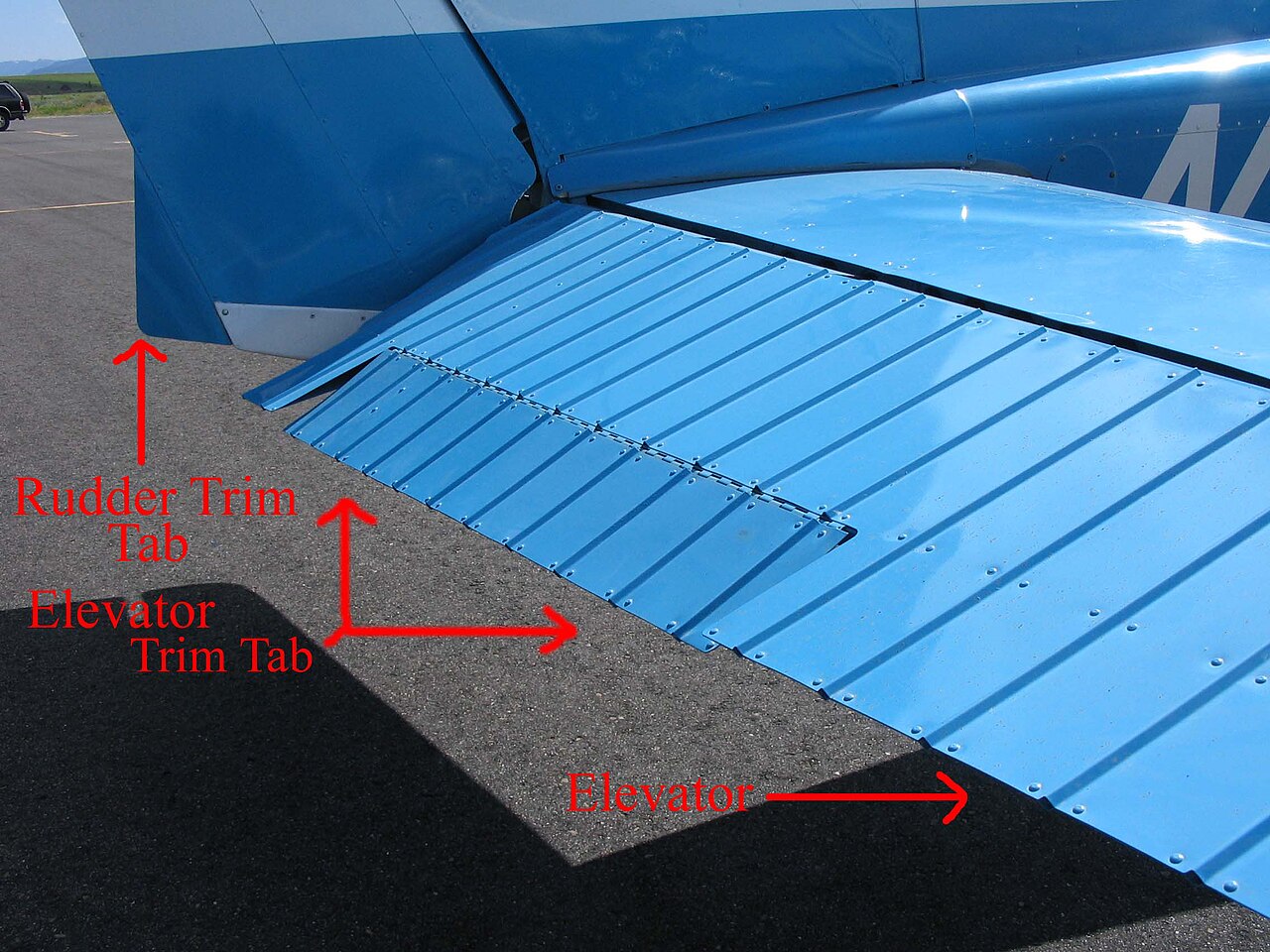Aileron
ailerons
bank
control surfaces
control theory
elevator trim
GA aircrafts
roll
rudder
secondary control surfaces
trim
trim tab
trimming
yaw
Trim : How Trim Works?
HOW DOES TRIM WORK
 |
| How does trim work? |
To trim an aircraft is a skill that pilots use to ease flying an aircraft. It helps maintain a constant pressure on the various flight controls , often used to maintain a constant pitch or rudder. It reduces the pilot’s workload significantly which allows them to focus on other tasks such as talking with the ATC, observing traffic around them, etc. Trim also proves to be a lifeline in case of an engine failure because it helps the pilots to fly the airplane with asymmetric thrust. Pilots can trim in any phase of the flight except for landing. Since it helps in maintaining level flight, constant rate of climb/descent or direction without the help of computers, it is popularly known as “Poor Man’s Auto Pilot” .
Surfaces that can be trimmed :
Elevator Trim : Used to maintain pitch of the aircraft
Rudder Trim : Used to maintain direction of the aircraft
Aileron Trim : Used to maintain bank angle
In most of the light aircraft , you will only find an elevator trim control in the cockpit. Rudder and Aileron trim controls are usually found on larger aircraft and only exist as a permanently deflected surface that needs to be altered by hand during the outside check of an airplane. Trim tabs come under secondary control surfaces
How does it work ?
Trimming is done by small surfaces usually connected to the trailing edge of the ailerons, rudder and elevator called Trim Tabs. In a Cessna 172, the elevator trim is adjusted by a wheel which is located in the pedestal area. The wheel has a marking which clearly indicates the point where the elevator trim will be in neutral or take-off position. The trim wheel is moved in the same direction as the control column. For instance, if the pilots wants to maintain a pitch up attitude, the wheel is to be moved in the same direction. The trim tab on the surface is set up to mimic the opposite direction thereby nullifying the force on the control column. For example, if a pilot were to maintain constant pitch up, he/she would keep persistent pressure on the control column while setting the trim wheel to nullify the force to a point where the pilot is no longer required to apply force to the control column anymore.
Trim during Takeoff and Landing
_N760SA_01.jpg/1920px-Southern_Air_Boeing_747-230B(SF)_N760SA_01.jpg) |
| Trim during takeoff and landing |
In Light aircraft , Trim is always set to neutral position during takeoff and landing phase. Do you know why?
Since they are the most critical phases of flight , pilots need to have full control of the aircraft.
Imagine during the the Final Approach phase, you have trimmed the aircraft to maintain a pitch down attitude and for some reason you need to “Go Around”. Even if you pull the yoke to climb , the elevator being trimmed restricts this action to a certain degree and may not give you the required pitch up attitude to climb. Hence, during take off and landing, the trim is set to neutral so that pilots can have full movement of the control surfaces.
Picture Credits :
1. Pilot's Handbook of Aeroautical Knowledge
2. Wikimedia Commons
Thank you for reading!
Picture Credits :
1. Pilot's Handbook of Aeroautical Knowledge
2. Wikimedia Commons
Thank you for reading!






